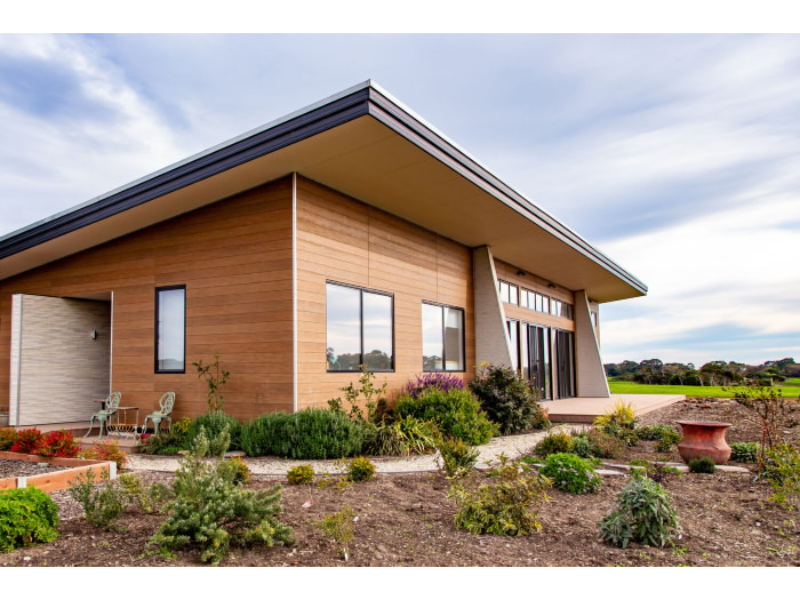In this article, I am looking at some options or methods for building natural housing. It seems more are using concrete blocks and cements to build homes. This is due to a number of reasons that cannot be overlooked or ignored.
Why is building with concrete blocks and cement so popular?
Building with concrete blocks and cement is popular for several reasons, including:
Availability and Affordability: Concrete is widely available and relatively inexpensive, making it an accessible and affordable building material. In many parts of the world, it is also the most commonly used building material.
Versatility: Concrete blocks and cement can be used to build structures of different sizes, shapes, and designs, making it a versatile building material.
Durability and Longevity: Concrete is a strong and durable material that can last for decades, even centuries, making it an attractive option for building structures that are intended to last.
Fire and Pest Resistant: Concrete is non-combustible and resistant to damage from pests such as termites, making it an ideal material for building in areas where fires and pests are a concern.
High Load-Bearing Capacity: Concrete has high load-bearing capacity, making it suitable for building tall structures and heavy loads.
Wide Acceptance: Concrete blocks and cement construction is widely accepted by building codes and regulations, making it easier to obtain permits and approvals for construction projects.
Building with concrete blocks and cement is popular due to its availability and affordability, versatility, durability and longevity, fire and pest resistance, high load-bearing capacity, and wide acceptance by building codes and regulations. However, it is important to consider the environmental impact of concrete production and to use sustainable building techniques and materials whenever possible.
How is cement made?
Cement is made through a process known as cement manufacturing, which involves several stages:
Mining: The raw materials for cement production, including limestone, clay, and iron ore, are mined from quarries.
Crushing and Grinding: The raw materials are crushed and ground into a fine powder to make them easier to mix and form a homogeneous mixture.
Proportioning and Blending: The raw materials are carefully proportioned and blended to ensure the correct chemical composition for the type of cement being produced.
Kiln Operation: The blended raw materials are fed into a rotary kiln, which is a large furnace-like structure that heats the raw materials to a temperature of about 1450°C. During this process, chemical reactions occur that convert the raw materials into clinker, which is a gray, hard, and nodular material.
Grinding Clinker: The clinker is cooled and then ground into a fine powder in a separate grinding process, which creates the final product – cement.
Quality Control: The cement is tested for quality and fineness to ensure it meets the specified standards.
In conclusion, cement is made through a multi-step process that involves mining the raw materials, crushing and grinding them into a fine powder, proportioning and blending the raw materials, heating the mixture in a kiln to produce clinker, grinding the clinker into a fine powder, and performing quality control tests on the final product.
What are some natural methods of building a house using natural materials?
Building a house using natural materials is an environmentally friendly and sustainable way of constructing a dwelling. Here are some natural methods that you can use to build a house using natural materials:
Cob building: This involves using a mixture of clay, sand, straw, and water to create a sturdy and durable building material that can be molded into walls and structures.
Straw bale construction: This method involves stacking bales of straw in a grid pattern and covering them with a layer of clay or earth to create an insulating and fire-resistant building material.
Adobe construction: Adobe is a type of sun-dried mud brick that can be used to build walls, floors, and roofs. This method has been used for thousands of years in many different parts of the world and is still used today as a sustainable and affordable building material.
Rammed earth construction: This method involves compacting layers of moist earth or soil into a solid mass using a formwork and a pneumatic rammer. The result is a strong and durable wall that has a high thermal mass, which helps to regulate the temperature inside the house.
Stone masonry: Building with stone is a traditional and time-tested method of construction. Stone can be used for walls, foundations, fireplaces, and more, and provides excellent insulation and durability.
These are just a few examples of natural methods for building a house using natural materials. Each method has its own unique advantages and disadvantages, let us look at these individually.
Cob building
Cob building is a building method that uses a mixture of clay, sand, and straw to create solid, load-bearing walls. This method has been used for hundreds of years, particularly in rural areas, and is still used today as a sustainable and eco-friendly building option.
Advantages of cob building include:
Sustainability: The materials used in cob building are readily available and often locally sourced, making cob building a sustainable building option.
Affordability: Cob building is a relatively low-cost building option, as the materials are inexpensive and the labour required is less intensive than other building methods.
Thermal Mass: Cob has high thermal mass, which helps regulate the temperature inside the building and reduce the need for heating and cooling.
Energy Efficiency: Cob walls have good insulation properties, which can help reduce energy consumption and lower the cost of heating and cooling.
Aesthetics: Cob buildings have a unique, natural beauty that can add character and interest to a building.
However, cob building also has some disadvantages that need to be considered, such as:
Skill and Labor Requirements: Cob building requires specialized skills and manual labor, which can be difficult to find and increase the cost of construction.
Weather Sensitivity: Cob is sensitive to moisture and may require protection from rain and other weather elements during construction.
Moisture Sensitivity: Cob is vulnerable to moisture damage, which can cause the walls to crack or deteriorate over time.
In conclusion, cob building is a sustainable and eco-friendly building option that offers several advantages, but also has its challenges and limitations. It is important to consider the local climate, building codes and regulations, and the availability of resources and skilled labour when deciding whether cob building is the right option for your needs.
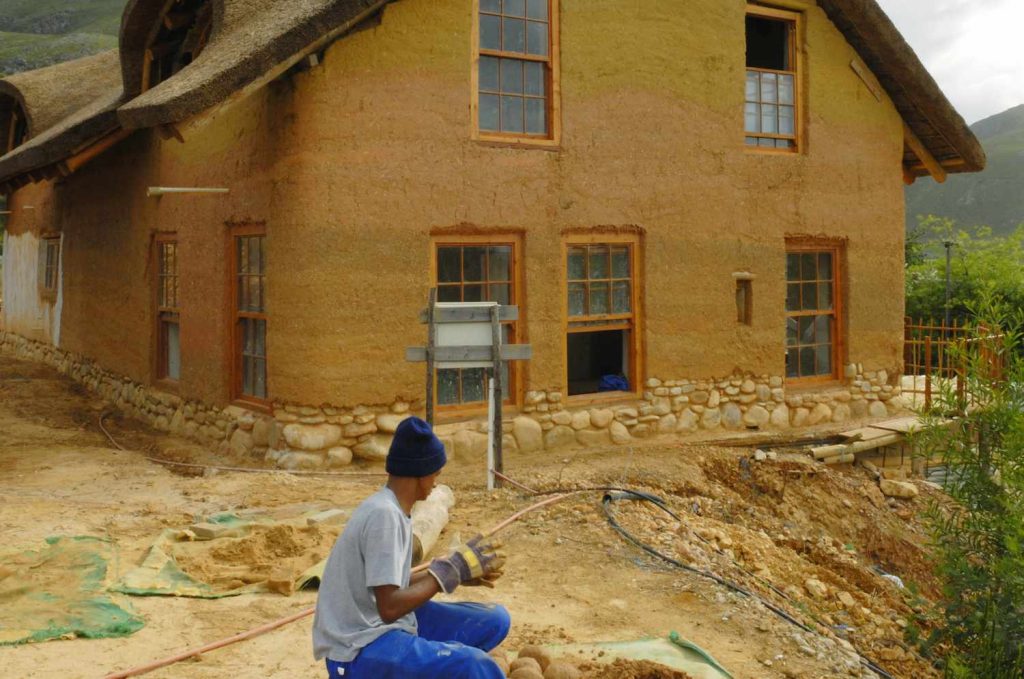
Straw bale construction
Straw bale construction is a building method that uses bales of straw as the primary building material. This method has gained popularity as a sustainable and eco-friendly building option in recent years.
Advantages of straw bale construction include:
Sustainability: Straw is a readily available and renewable resource, making straw bale construction a sustainable building option.
Energy Efficiency: Straw bale walls have excellent insulation properties, which can help reduce energy consumption and lower the cost of heating and cooling.
Affordability: Straw bales are relatively inexpensive and readily available, making straw bale construction a cost-effective building option.
Durability: Straw bale walls are strong and durable, and can last for many years with proper maintenance.
Aesthetics: Straw bale walls have a unique, natural beauty that can add character and interest to a building.
However, straw bale construction also has some disadvantages that need to be considered, such as:
Skill and Labour Requirements: Straw bale construction requires specialised skills and manual labour, which can be difficult to find and increase the cost of construction.
Weather Sensitivity: Straw bales are sensitive to moisture and may require protection from rain and other weather elements during construction.
Fire Risk: Straw bales are highly flammable and may pose a fire risk if not properly protected.
Code Compliance: Straw bale construction may not be recognised or approved by building codes and regulations in some areas, which can make obtaining permits and approvals more difficult.
In conclusion, straw bale construction is a sustainable and eco-friendly building option that offers several advantages, but also has its challenges and limitations. It is important to consider the local climate, building codes and regulations, and the availability of resources and skilled labour when deciding whether straw bale construction is the right option for your needs.
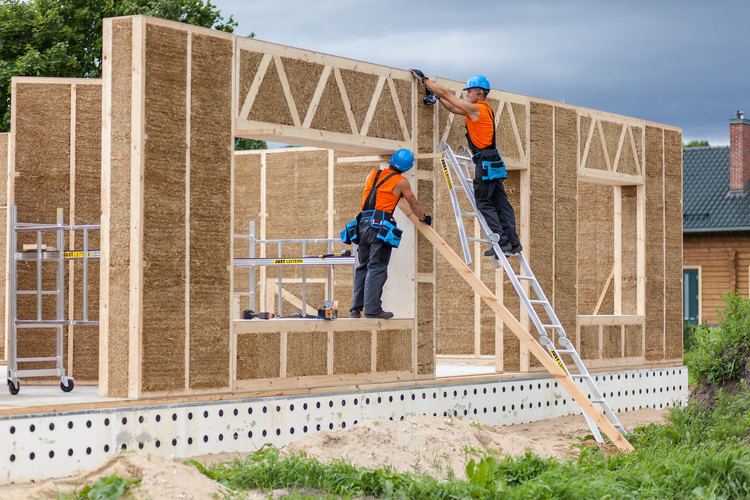
Adobe construction
Adobe construction is a building method that uses sun-dried bricks made of clay and sand as the primary building material. Adobe construction has been used for thousands of years, particularly in regions with a hot and dry climate, and is still used today as a sustainable and eco-friendly building option.
Advantages of adobe construction include:
Sustainability: Adobe bricks are made from locally sourced, renewable materials, making adobe construction a sustainable building option.
Thermal Mass: Adobe has high thermal mass, which helps regulate the temperature inside the building and reduce the need for heating and cooling.
Affordability: Adobe construction is a relatively low-cost building option, as the materials are inexpensive and the labour required is less intensive than other building methods.
Durability: Adobe walls are strong and durable, and can last for many years with proper maintenance.
Aesthetics: Adobe buildings have a unique, natural beauty that can add character and interest to a building.
However, adobe construction also has some disadvantages that need to be considered, such as:
Skill and Labour Requirements: Adobe construction requires specialized skills and manual labor, which can be difficult to find and increase the cost of construction.
Weather Sensitivity: Adobe is sensitive to moisture and may require protection from rain and other weather elements during construction.
Fire Risk: Adobe is a combustible material and may pose a fire risk if not properly protected.
Code Compliance: Adobe construction may not be recognised or approved by building codes and regulations in some areas, which can make obtaining permits and approvals more difficult.
In conclusion, adobe construction is a sustainable and eco-friendly building option that offers several advantages, but also has its challenges and limitations. It is important to consider the local climate, building codes and regulations, and the availability of resources and skilled labour when deciding whether adobe construction is the right option for your needs.
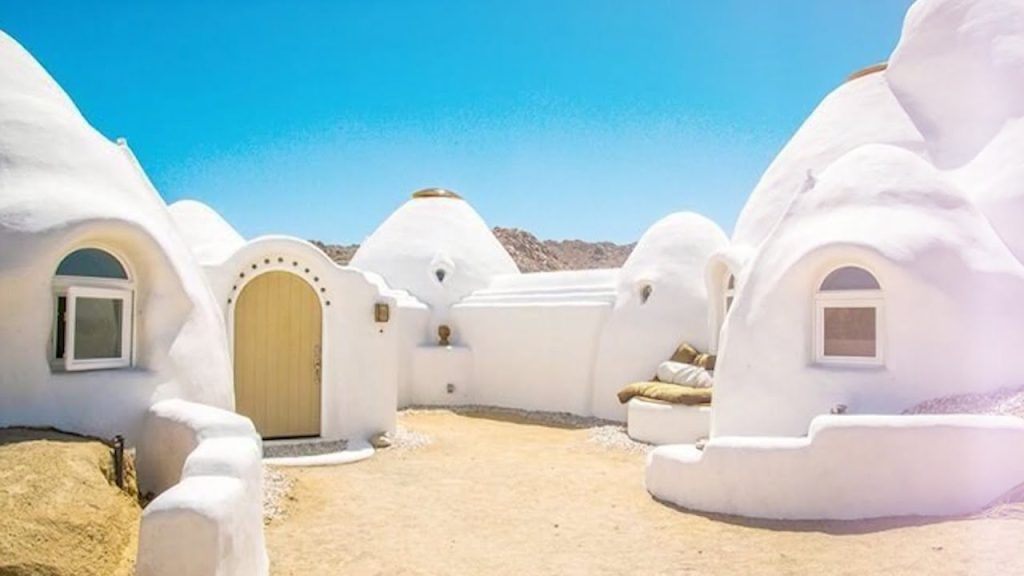
Rammed earth construction
Rammed earth construction is a building method that uses compacted earth as the primary building material. This method has been used for thousands of years, and is still used today as a sustainable and eco-friendly building option.
Advantages of rammed earth construction include:
Sustainability: Earth is a readily available and renewable resource, making rammed earth construction a sustainable building option.
Durability: Rammed earth walls are strong and durable, and can last for hundreds of years with proper maintenance.
Thermal Mass: Earth has high thermal mass, which helps regulate the temperature inside the building and reduce the need for heating and cooling.
Energy Efficiency: Rammed earth walls have good insulation properties, which can help reduce energy consumption and lower the cost of heating and cooling.
Aesthetics: Rammed earth walls have a unique, natural beauty that can add character and interest to a building.
However, rammed earth construction also has some disadvantages that need to be considered, such as:
Skill and Equipment Requirements: Rammed earth construction requires specialized equipment and skilled labour, which can increase the cost of construction.
Weather Sensitivity: Rammed earth walls can be sensitive to weather and may require protection from rain and other weather elements during construction.
Moisture Sensitivity: Earth is vulnerable to moisture damage, which can cause the walls to crack or deteriorate over time.
In conclusion, rammed earth construction is a sustainable and eco-friendly building option that offers several advantages, but also has its challenges and limitations. It is important to consider the local climate, building codes and regulations, and the availability of resources and skilled labour when deciding whether rammed earth construction is the right option for your needs.
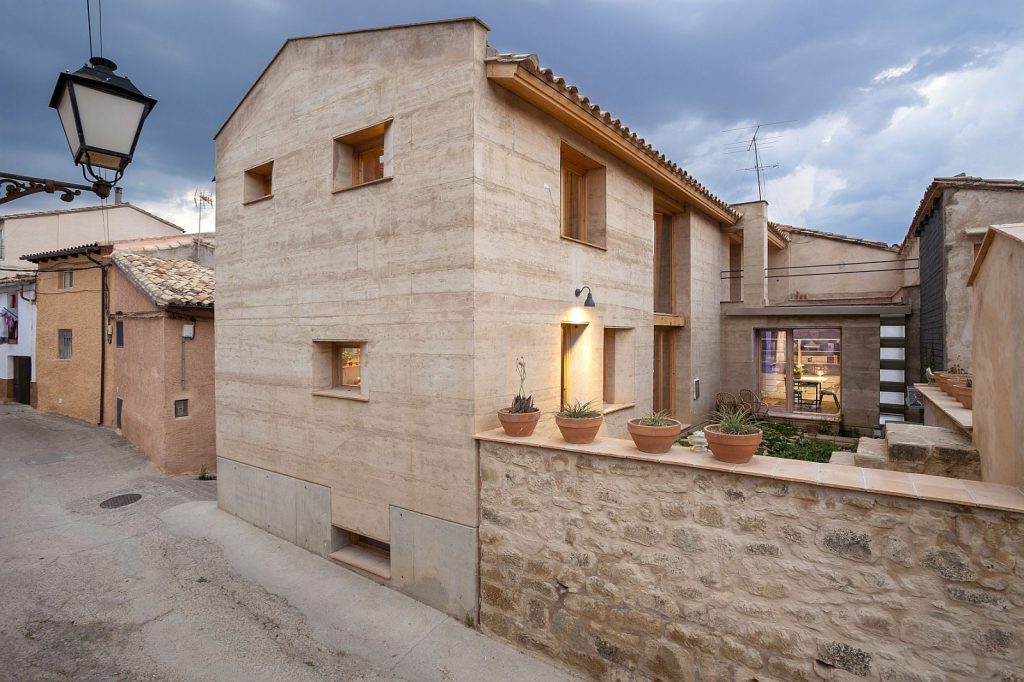
Stone masonry
Stone masonry is a building method that uses stones as the primary building material. Stone masonry has been used for thousands of years and is still used today as a durable and sustainable building option.
Advantages of stone masonry include:
Durability: Stone is a durable and long-lasting material that can stand up to extreme weather conditions and last for centuries with proper maintenance.
Sustainability: Stone is a natural and renewable resource, making stone masonry a sustainable building option.
Energy Efficiency: Stone has high thermal mass, which helps regulate the temperature inside the building and reduce the need for heating and cooling.
Aesthetics: Stone has a unique, natural beauty that can add character and interest to a building.
Historical Significance: Stone masonry is often used to preserve the cultural and historical heritage of a region or community.
However, stone masonry also has some disadvantages that need to be considered, such as:
Cost: Stone is a relatively expensive building material, and the cost of labor and equipment to cut and transport stone can also be high.
Skill and Labour Requirements: Stone masonry requires specialised skills and manual labor, which can be difficult to find and increase the cost of construction.
Weather Sensitivity: Some types of stone can be sensitive to weather conditions and may require protection from rain and other weather elements.
In conclusion, stone masonry is a durable and sustainable building option that offers several advantages, but also has its challenges and limitations. It is important to consider the local climate, building codes and regulations, and the availability of resources and skilled labour when deciding whether stone masonry is the right option for your needs.
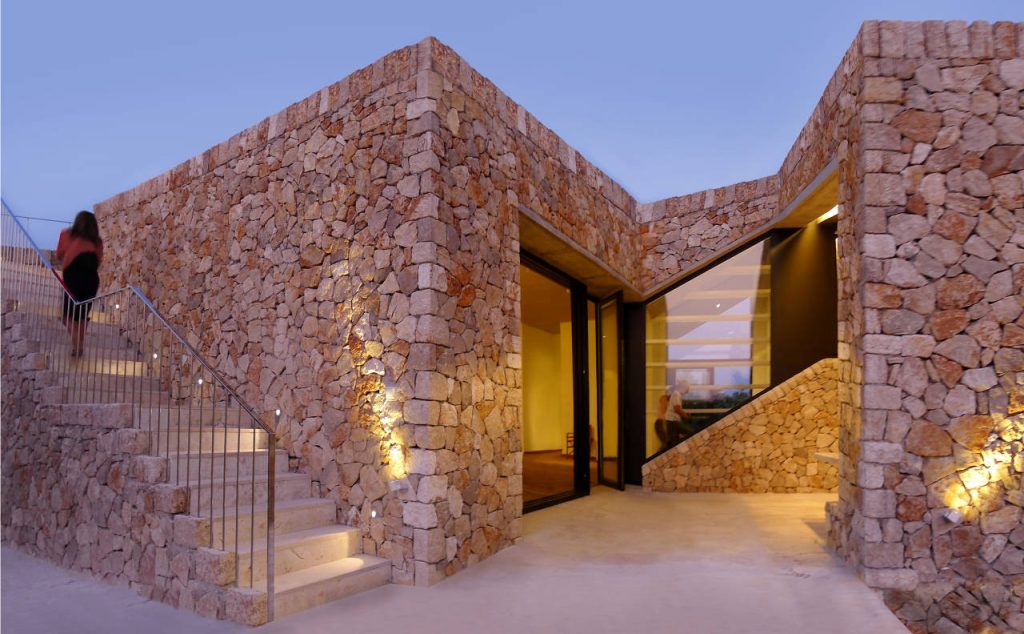
Wood house construction
Wood houses are homes that are constructed using wood as the primary building material. Wood is a versatile and renewable resource that has been used for construction for thousands of years, and is still popular today for its natural beauty and warmth. Wood is a renewable resource that is widely available and can be sourced from sustainably managed forests. Building with wood is also relatively fast and cost-effective compared to other materials.
Wooden houses can be constructed using a variety of techniques, including conventional frame construction, log construction, and post-and-beam construction. In conventional frame construction, dimensional lumber is used to create the structural framework of the walls, floor, and roof. Log construction involves using whole logs to build the walls, while post-and-beam construction uses large wooden beams and posts to create the structural framework.
Advantages of wood houses include:
Renewable Resource: Wood is a renewable resource, making it an environmentally friendly choice for construction.
Insulation: Wood is a good insulator, which can help reduce energy consumption and lower the cost of heating and cooling.
Warmth: Wood has a natural warmth and character that makes it a popular choice for homes, giving them a cozy and inviting atmosphere.
Versatility: Wood can be used in a variety of ways in construction, from framing and flooring, to siding and roofing, making it a versatile building material.
Speed of Construction: Wood can be cut and installed quickly and efficiently, making it possible to construct a wood house in a shorter period of time than other building methods.
However, wood houses also have some disadvantages that need to be considered, such as:
Fire Hazard: Wood is a highly flammable material, and wood houses can pose a fire hazard if proper safety measures are not taken.
Pests: Wood is vulnerable to attack from pests, such as termites and carpenter ants, which can cause damage to the structure over time.
Maintenance: Wood requires regular maintenance, such as painting and staining, to protect it from weathering and decay.
In conclusion, wood houses can be a beautiful and sustainable housing solution, but they also have their challenges and limitations. It is important to consider the local climate, building codes and regulations, and the availability of resources and skilled labor when deciding whether a wood house is the right option for your needs.

Mud house construction
Mud houses are homes that are constructed using mud as a building material. This method of construction has been used for thousands of years in many different parts of the world and is still used today in many rural areas and developing countries.
Advantages of mud houses include:
Sustainability: Mud is a renewable and sustainable building material that is readily available and easy to work with.
Affordability: The raw materials used to make mud are inexpensive, which makes mud houses a cost-effective housing solution.
Thermal Mass: Mud has high thermal mass, which helps regulate the temperature inside the house and reduce the need for heating and cooling.
Energy Efficiency: Mud houses are well-insulated, which can help reduce energy consumption and lower the cost of heating and cooling.
Cultural Significance: In many parts of the world, mud houses have cultural and historical significance and are an important part of the local architecture and heritage.
However, mud houses also have some disadvantages that need to be considered, such as:
Vulnerability to Weather: Mud houses are susceptible to weather damage, such as cracking and erosion, and may require regular maintenance and repair.
Limited Life Span: The life span of mud houses can be limited, and they may need to be rebuilt or renovated after a certain period of time.
In conclusion, mud houses can be a sustainable and affordable housing solution, but they also have their challenges and limitations. It is important to consider the local climate, building codes and regulations, and the availability of resources and skilled labour when deciding whether a mud house is the right option for your needs.
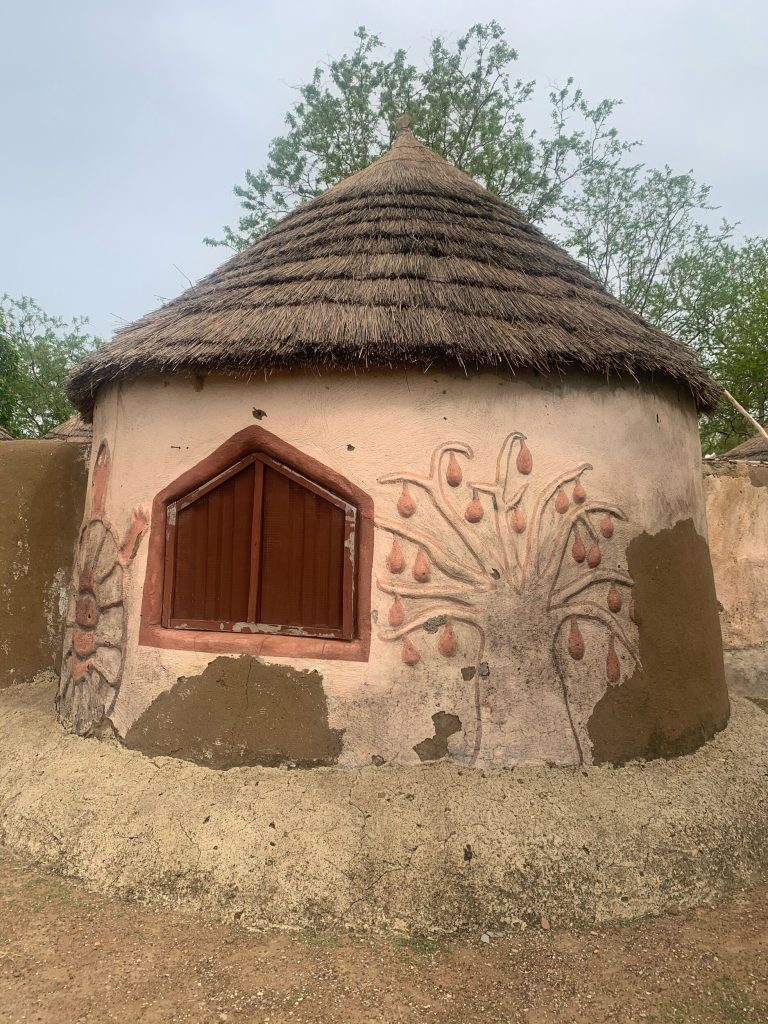
Interlocking earth blocks
Interlocking earth blocks (IEBs) are a type of compressed stabilised earth block that are used as a building material. They are made from a mixture of soil, sand, cement, and water that is compressed into a mold, creating blocks that interlock with each other without the need for mortar.
IEBs are a sustainable and environmentally friendly building material that offers several advantages:
Low Cost: The raw materials used to make IEBs are readily available and inexpensive, which makes them a cost-effective building solution.
Durability: IEBs are strong and durable, and can withstand the effects of weather and natural disasters.
Thermal mass: IEBs have high thermal mass, which helps regulate the temperature inside the building and reduce the need for heating and cooling.
Energy Efficiency: IEBs have good insulation properties, which can help reduce energy consumption and lower the cost of heating and cooling.
Ease of Construction: IEBs are easy to work with, and can be constructed quickly and efficiently without the need for specialised equipment or skilled labour.
In conclusion, interlocking earth blocks are a versatile and sustainable building material that can be used for a variety of construction projects, from small-scale housing to large commercial buildings.
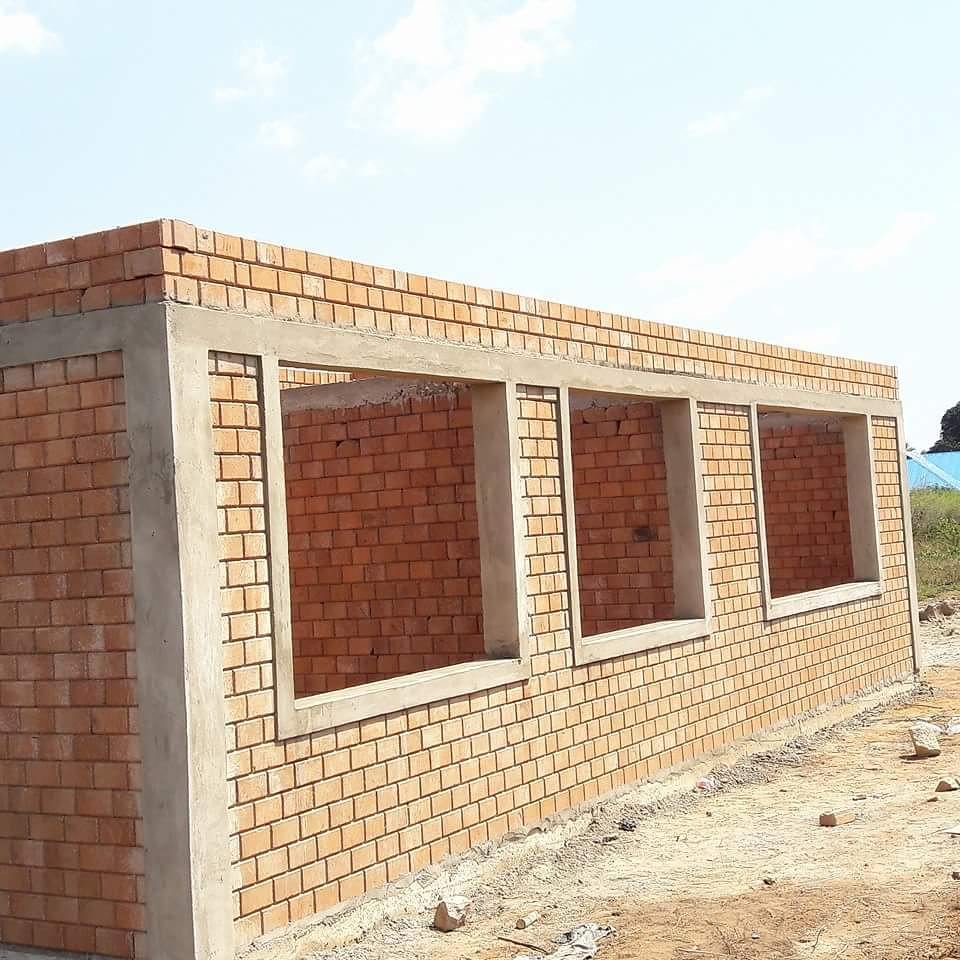
Hemp block construction
Hemp blocks, also known as hempcrete, are made from the inner woody fibers of the hemp plant mixed with a lime-based binder. This mixture is then molded into blocks and used as a building material for walls. The use of hemp as a building material is becoming increasingly popular due to its environmentally friendly properties, such as being renewable, biodegradable, and having good insulation and air-quality properties. Additionally, unlike traditional building materials like concrete, hemp does not release harmful carbon emissions during its production.
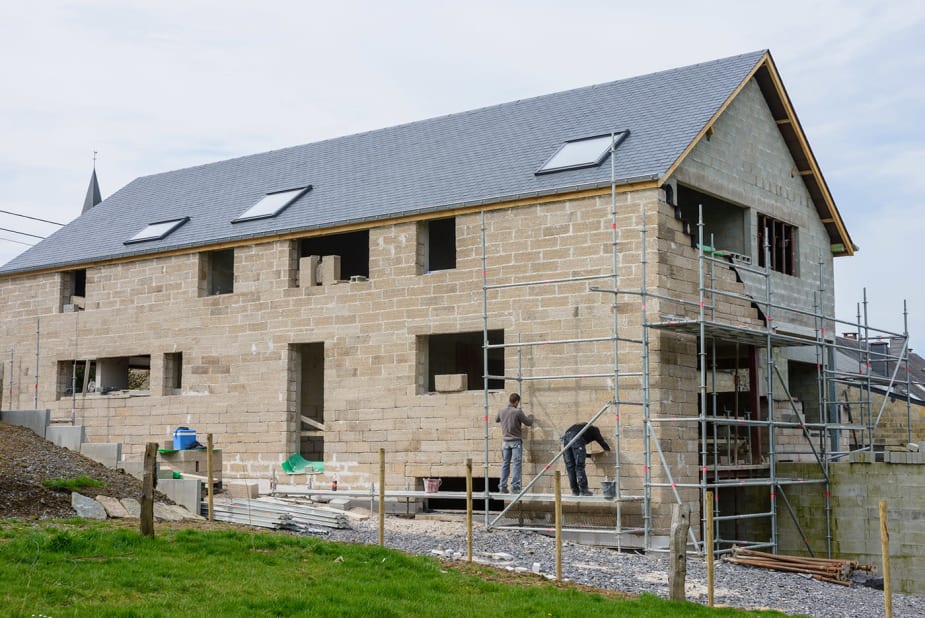
Which of the method is the least expensive method to build a house?
The cost of building a house using different methods will vary depending on several factors, such as the location, the cost of materials, the complexity of the design, and the availability of skilled labour. However, some of the more cost-effective methods of building a house using natural materials include:
- Mud house
- Rammed earth construction
- Cob building
- Straw bale construction
These methods typically use locally sourced, renewable materials that are inexpensive and readily available, which can help reduce the cost of construction. In addition, the manual labour required for these methods is relatively simple, which can also help lower the cost of construction.
However, it is important to note that the cost of building a house is not solely determined by the building method, and other factors such as the location, the design, and the local regulations and codes will also play a role in determining the final cost.
Which method of building a house is more popular worldwide?
The most popular method of building a home worldwide varies depending on the region and the local cultural, economic, and environmental factors. However, some of the more widely used methods include:
Conventional Stick-Frame Construction: This is the most common method of building a home in many parts of the world. It involves building a wooden frame and covering it with various materials such as sheathing, siding, and roofing.
Masonry Construction: This method involves building a home using masonry materials such as bricks, stones, and concrete blocks. This method is popular in many regions with a long history of masonry construction, such as Europe and South Asia.
Light Steel Frame Construction: This method uses lightweight steel frames to construct the walls and roof of a building. It is gaining popularity as a fast, efficient, and sustainable method of construction.
Prefabricated Construction: This method involves manufacturing building components off-site and then assembling them on-site. Prefabricated construction is growing in popularity as a fast, efficient, and sustainable method of building a home.
In conclusion, the most popular method of building a home worldwide will depend on the local cultural, economic, and environmental factors, as well as the availability of resources, technology, and skilled labour.
Why is it better to build sustainably than build using concrete blocks and cement?
Building sustainably has several advantages over building using traditional concrete block and cement construction:
Environmentally Friendly: Sustainable building methods use materials and techniques that have a lower environmental impact compared to concrete block and cement construction. For example, using renewable materials such as wood, straw bales, or earth blocks can reduce the carbon footprint of the building compared to concrete, which is energy-intensive to produce.
Energy Efficiency: Sustainable building methods often use materials and design techniques that enhance energy efficiency, such as high thermal mass, natural ventilation, and passive solar design. This can help reduce the energy consumption and costs associated with heating and cooling the building.
Durability: Sustainable building materials and techniques, such as cob, rammed earth, and stone masonry, are often more durable and long-lasting than concrete, which can crack and deteriorate over time.
Health and Comfort: Sustainable building methods often use materials and techniques that promote healthy indoor air quality and thermal comfort, such as natural ventilation and the use of non-toxic materials.
Economic Benefits: Sustainable building methods can often reduce the cost of construction, maintenance, and operation compared to concrete block and cement construction. For example, using locally sourced and renewable materials can reduce the cost and environmental impact of transportation, and using energy-efficient design can reduce energy costs over the life of the building.
In conclusion, building sustainably offers several advantages over traditional concrete block and cement construction, including environmental friendliness, energy efficiency, durability, health and comfort, and economic benefits. However, it is important to consider the local regulations, codes, and the availability of resources, technology, and skilled labor when deciding whether sustainable building is the right option for your needs.
This article is copyrighted by Ital is Vital, 2025. Want to re-post this article? Visit our guidelines.
DISCLAIMER: THIS WEBSITE DOES NOT PROVIDE MEDICAL ADVICE
The information, including but not limited to, text, graphics, images and other material contained on this website are for informational purposes only. The purpose of this website is to promote broad consumer understanding and knowledge of various health topics. It is not intended to be a substitute for professional medical advice, diagnosis or treatment. Always seek the advice of your physician or other qualified health care provider with any questions you may have regarding a medical condition or treatment and before undertaking a new health care regimen, and never disregard professional medical advice or delay in seeking it because of something you have read on this website.
